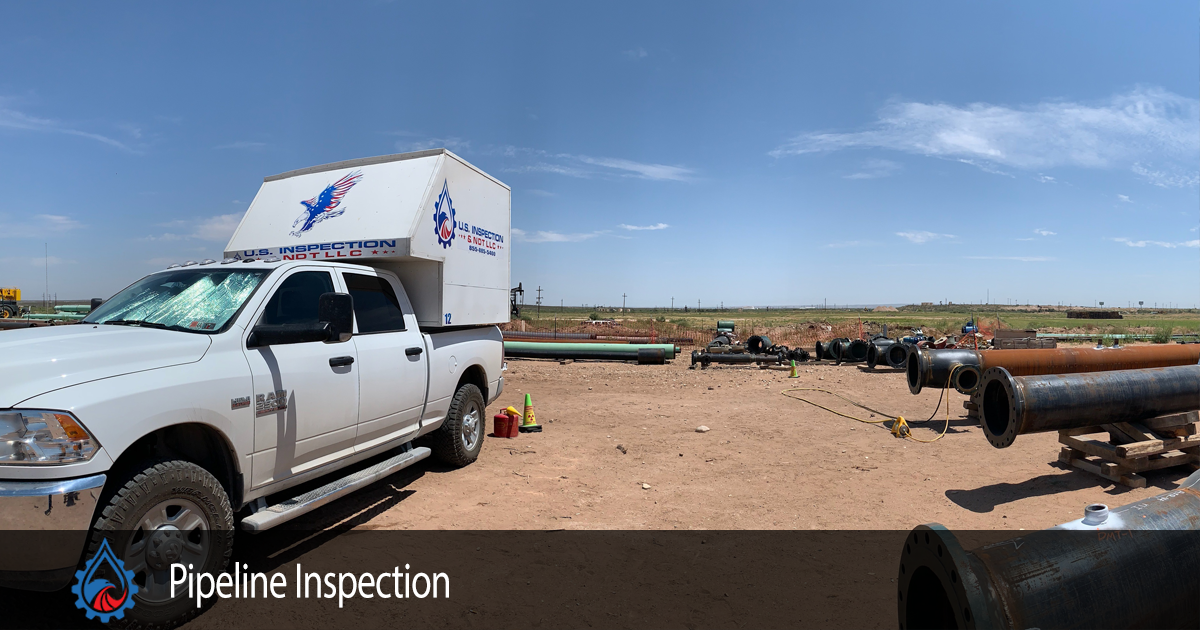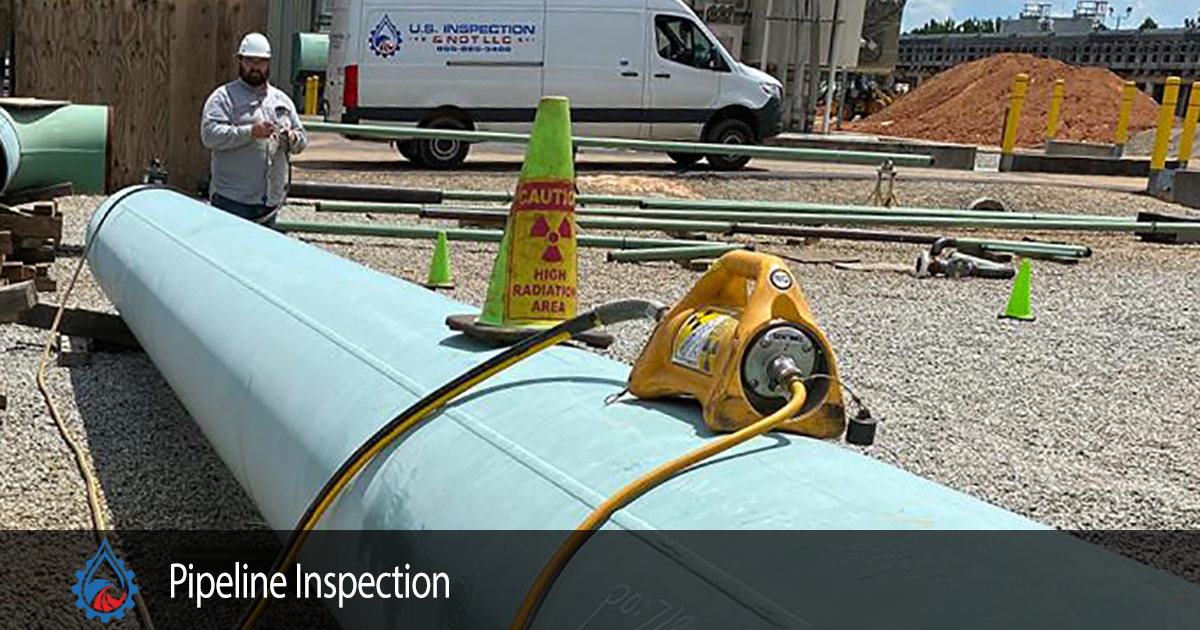
Damage in pipelines can be costly and dangerous. Cracks and flaws in pipes can cause a threat to your operations as well as to the environment, so it’s important to catch them before they fail. Flaws can occur at any stage of a pipe’s life from manufacturing to installation or just through wear and tear over time, and they can be difficult to detect because they are often invisible to the human eye. If you are operating a pipeline, you should test regularly throughout its lifetime.
Inspection Techniques
U.S. Inspection and NDT, LLC, has pipeline inspection techniques to help you catch issues before, during and after installation with inspection of and NDT on piping systems, welded pipe and other pipeline applications.
Radiographic Testing
With radiographic testing, we can view the internal structure of the pipeline using X-ray and gamma-ray radiation. With this technology, we can inspect for weld quality and locate corrosion in or on pipes.
Ultrasonic Testing
Ultrasonic testing uses short, high-frequency waves to identify flaws in pipes and components and can very quickly identify areas that need attention. Ultrasonic testing is particularly effective for measuring wall thickness and finding flaws in pipes.
Magnetic Particle Testing
Magnetic particle testing is a fairly simple, yet effective, method of testing in which the pipes are magnetized and fluorescent particles are added that will show patterns formed by potential flaws. It’s useful for quality control and final inspections.
Liquid Penetrant Testing
Liquid penetrant testing involves the use of a fluorescent dye applied to the surface. The liquid can then flow into tiny spaces that can’t be seen by the eye. It is useful for locating and determining the severity of flaws along the surface of the pipe.
Benefits of Pipeline Inspections
Keeping your pipeline operational and safe is your top priority, and Pipeline Inspections and testing with NDT can help ensure that you meet that goal.
NDT testing and scanning has numerous benefits, including:
Costs of Not Testing
Regular nondestructive testing should be part of any maintenance plan. It can help you detect flaws, corrosion and damage and repair them before they cause damage.
US Inspection and NDT, LLC, offers many tools that help take the risk out of pipeline operation. We can accurately locate and identify potential issues so that they can be fixed before they cause major failures. Our team of experts are trained and experienced to provide you with actionable insights and help create a recovery plan.
Have Questions About Pipeline Inspections?
Our clients depend on USINDT to not only identify flaws and discontinuities, but also to advise in the proper techniques of nondestructive testing needed. Our team of experts can help you create a complete quality management plan to help you get the results that you want and make sure that you meet all environmental, safety and regulatory requirements. Contact us today to discuss your project and needs.

